Riding Vietnam’s legendary Ha Giang Loop now comes with stricter rules and rising fines for unlicensed riders. As police enforcement ramps up in 2nd November 2025, Phieu Travel’s updated guide explains the latest Ha Giang Loop fines, license requirements, and safe legal ways to explore northern Vietnam’s most breathtaking adventure route.
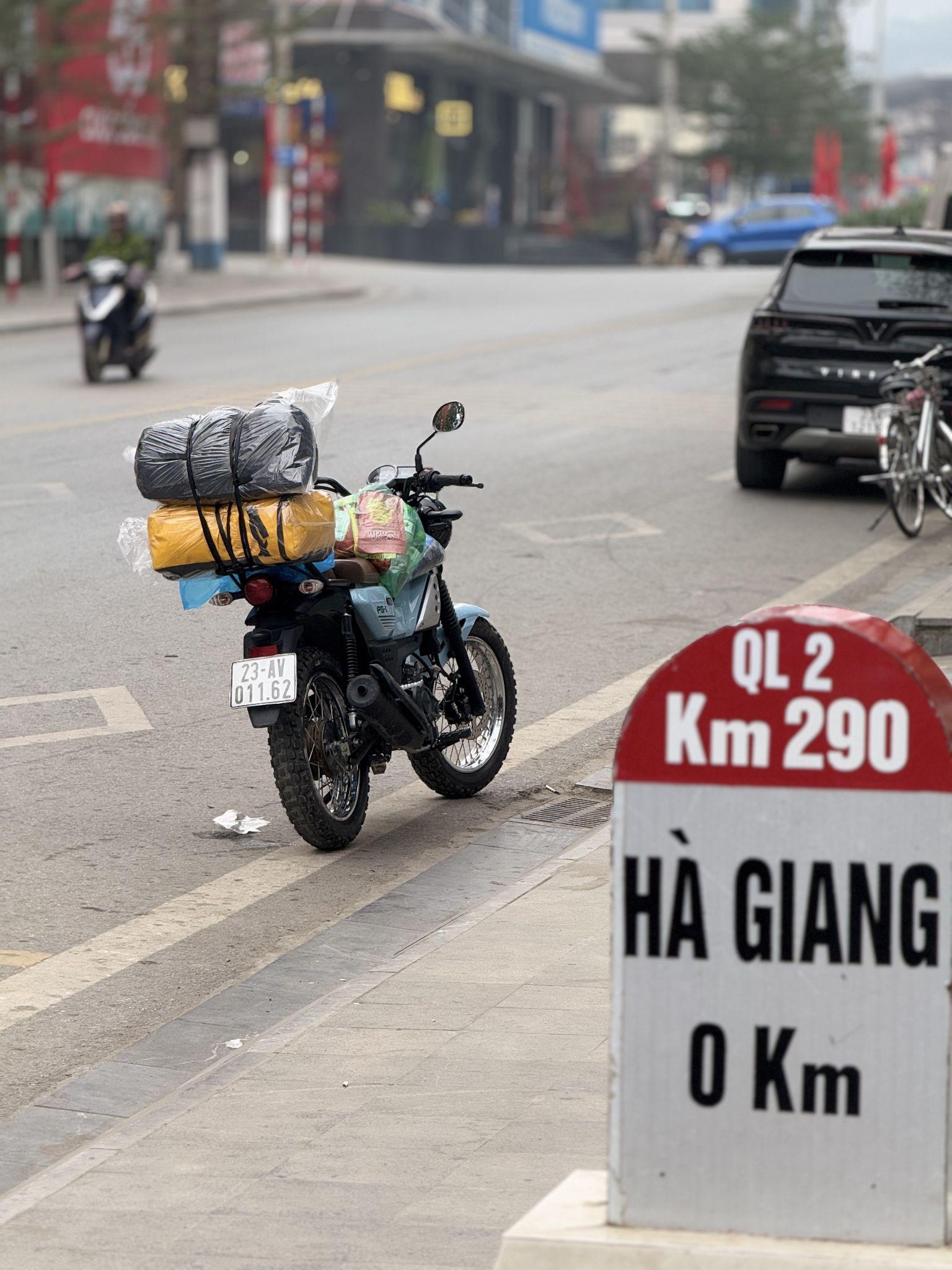
1. What Are the Fines for Riding Without a License on the Ha Giang Loop?
For many travelers, the Ha Giang Loop represents the pinnacle of Vietnamese adventures. However, the dream of freedom on these winding mountain roads comes with strict legal requirements. Local authorities have significantly increased enforcement in recent years, particularly targeting foreign tourists without proper documentation.
Understanding the potential fines you face is crucial before attempting this journey. Police checkpoints have become more frequent and systematic, especially during peak tourism seasons. The penalties are substantial and can quickly derail your travel budget if you’re caught unprepared.
1.1 2025 Fine Amounts for No License
Vietnam’s traffic regulations underwent significant revisions in 2024, with implementation continuing through 2025. These changes have directly impacted tourists on the Ha Giang Loop. Current penalties for riding without proper licensing are now more severe than in previous years.
If caught riding without a valid license on the Ha Giang Loop in 2025, foreigners face fines ranging from 2,000,000 to 8,000,000 VND (approximately $80-$315 USD). This represents a significant increase from previous years. Repeat offenders or those committing multiple violations simultaneously can see fines exceeding 18,000,000 VND ($700+ USD).
The specific fine amount typically depends on several factors:
- Engine size of the motorcycle (larger engines often incur higher penalties).
- Whether multiple violations occurred simultaneously (no helmet, speeding, etc.).
- First-time versus repeat offender status.
- The discretion of the enforcing officer.
It’s important to note that these amounts represent official fines. In practice, some travelers report varying experiences with enforcement and payment procedures.
1.2 How Fines Are Issued and Paid in Practice
The process of receiving and paying fines on the Ha Giang Loop often differs from the official procedure described in Vietnamese law. This creates confusion for many foreign travelers when they encounter police checkpoints.
When stopped by police, officers typically request your driving license, passport, and vehicle registration. Without proper documentation, you’ll receive a violation notice. While the official process involves paying at a government office or bank, enforcement in remote Ha Giang often works differently. Many tourists report being asked to pay on-spot “administrative fees” that may not match official fine amounts.
Official receipts should accompany any fine payment. However, travelers frequently report receiving simplified receipts or no documentation at all. This creates a challenging situation where tourists must balance legal compliance with practical realities in a remote region.
Payment methods also vary widely. While cash (Vietnamese dong) is universally accepted, digital payments or credit cards are rarely an option for traffic violations in Ha Giang. This necessitates carrying sufficient cash when traveling the loop.
1.3 Possible Confiscation of Vehicle
Beyond monetary fines, riding without proper licensing on the Ha Giang Loop carries another significant risk: vehicle confiscation. This penalty has become increasingly common in 2025 as authorities strengthen enforcement.
When police determine a serious violation has occurred, they have the authority to impound your motorcycle. This typically happens in cases where:
- The rider has no valid license at all.
- The motorcycle lacks proper registration documents.
- Multiple serious violations occur simultaneously.
- The rider cannot pay the required fine.
Reclaiming a confiscated vehicle becomes extraordinarily complicated for tourists. The process typically involves visiting the police station where the bike is held, presenting proper documentation (which you likely didn’t have in the first place), and paying all associated fines and storage fees.
For tourists on tight itineraries, vehicle confiscation effectively ends the Ha Giang Loop experience. Most rental companies charge substantial fees if their vehicles are impounded, often far exceeding the official fine amounts. Some travelers report paying up to $500 in combined fees, fines, and rental company penalties to resolve confiscation situations.
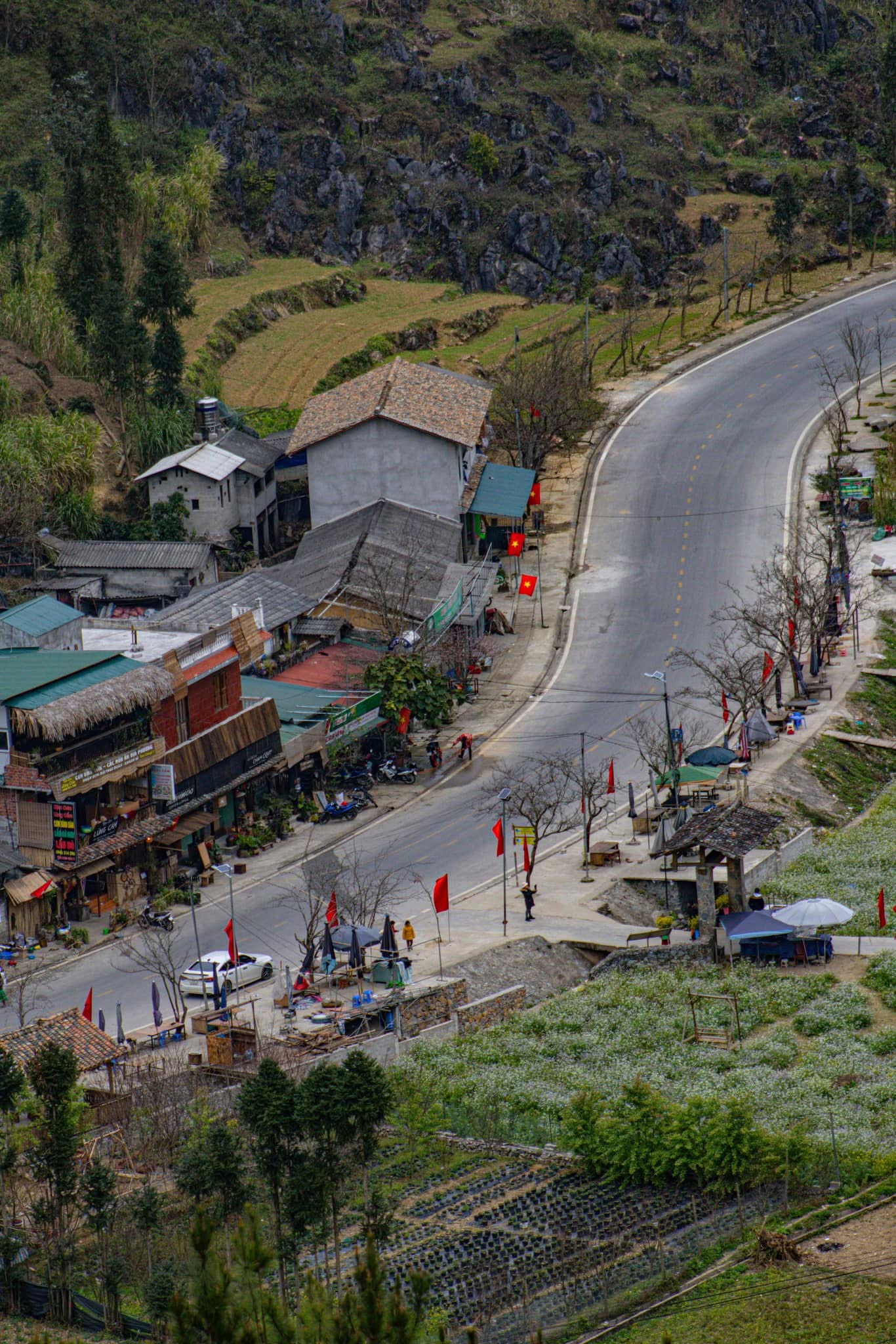
2. License Requirements for Foreigners
The spectacular landscapes of the Ha Giang Loop draw thousands of foreign travelers yearly. Yet many arrive unprepared for Vietnam’s specific licensing requirements for motorcycle riding. This lack of preparation leads to unexpected fines, confrontations with authorities, and potentially dangerous situations.
Understanding exactly which documents you need before attempting the loop can save you significant trouble. Vietnam’s requirements differ from many Western countries, and regulations that might seem flexible in tourist centers like Hanoi or Ho Chi Minh City are enforced more strictly in Ha Giang province.
2.1 Valid International Driving Permit (1968 Vienna Convention Only)
The cornerstone document for legally riding the Ha Giang Loop as a foreigner is an International Driving Permit (IDP) issued under the 1968 Vienna Convention on Road Traffic. This specific distinction is crucial and frequently misunderstood by travelers.
Vietnam only recognizes IDPs issued under this particular convention. Your IDP must be paired with your valid home country motorcycle license – neither document alone is sufficient. Both must be presented together when requested by authorities.
To obtain a valid IDP for Vietnam:
- Apply through your home country’s authorized issuing organization (typically automobile associations).
- Ensure it explicitly states it’s issued under the 1968 Vienna Convention.
- Confirm it specifically covers motorcycle operation (category A).
- Obtain it before traveling to Vietnam (it cannot be issued within Vietnam).
IDPs typically remain valid for one year from the issue date and cannot be extended within Vietnam. Plan accordingly if your travels extend beyond this period.
2.2 National Motorcycle License Requirements
Alongside your IDP, you must possess a valid motorcycle license from your home country. This creates significant complications for many tourists, as motorcycle licensing categories vary internationally.
Your home license must explicitly permit operation of the vehicle class you’re riding in Vietnam. For most Ha Giang Loop motorcycles (typically 125-150cc), this requires a full motorcycle license – not a moped, scooter, or car license. The license must be current and not provisional or learner status.
Some key requirements for your national license:
- Must specifically authorize motorcycle operation (not just cars or automatic scooters).
- Must cover the engine capacity of your rented motorcycle.
- Must be fully valid (not suspended, expired, or provisional).
- Must be original (not photocopied or digital-only).
Keep in mind that Vietnamese authorities may not fully understand foreign license classifications. Carrying additional documentation explaining your license’s motorcycle authorization can sometimes help during checkpoints.
2.3 Which Countries’ Licenses Are Not Accepted?
A crucial misunderstanding concerns which foreign licenses Vietnam recognizes. Many travelers from Western countries discover too late that their home country’s documentation isn’t valid for riding in Vietnam.
Vietnam only acknowledges licenses from countries that are signatories to the 1968 Vienna Convention on Road Traffic. This excludes many major tourist sources including:
- United States (all states).
- Canada.
- Australia.
- New Zealand.
- United Kingdom (though it signed the convention, implementation differs).
- Ireland.
- Most Asian countries (Japan, South Korea, etc.).
Travelers from these nations cannot legally ride motorcycles in Vietnam using only their home license and standard IDP. Despite what some rental companies might suggest, there is no legal gray area here in 2025’s enforcement climate.
Countries whose licenses are recognized (with proper IDP) include most European Union nations, Switzerland, Brazil, Russia, and certain South American countries. Even for these nations, the license must specifically include motorcycle authorization.
2.4 Why Engine Size (Above/Below 50cc) Matters
Vietnamese traffic regulations create a significant distinction between vehicles based on engine displacement. This technicality provides one potential (though impractical) legal workaround for Ha Giang Loop travelers.
Vehicles under 50cc do not require a motorcycle license to operate in Vietnam. Technically, foreign tourists can legally ride sub-50cc scooters with just a regular car driver’s license. However, this presents several practical problems for the Ha Giang Loop:
- Virtually no rental companies offer sub-50cc vehicles for the loop.
- Such low-powered vehicles cannot safely navigate the steep mountain passes.
- Many sections require engine power that sub-50cc scooters simply cannot provide.
- The journey would take significantly longer with frequent stops to cool overworked engines.
While this loophole exists in regulation, it offers little practical benefit for Ha Giang travelers. Some tourists attempt to claim their rented 125-150cc bike is under 50cc when stopped, but police officers are well aware of this tactic and can easily identify actual engine sizes.
For travelers determined to experience the region legally without proper motorcycle licensing, alternative options include:
- Hiring an Easy Rider service (riding as passenger with a licensed local driver).
- Joining organized tours using cars or minivans.
- Focusing on treks and shorter excursions from base towns.
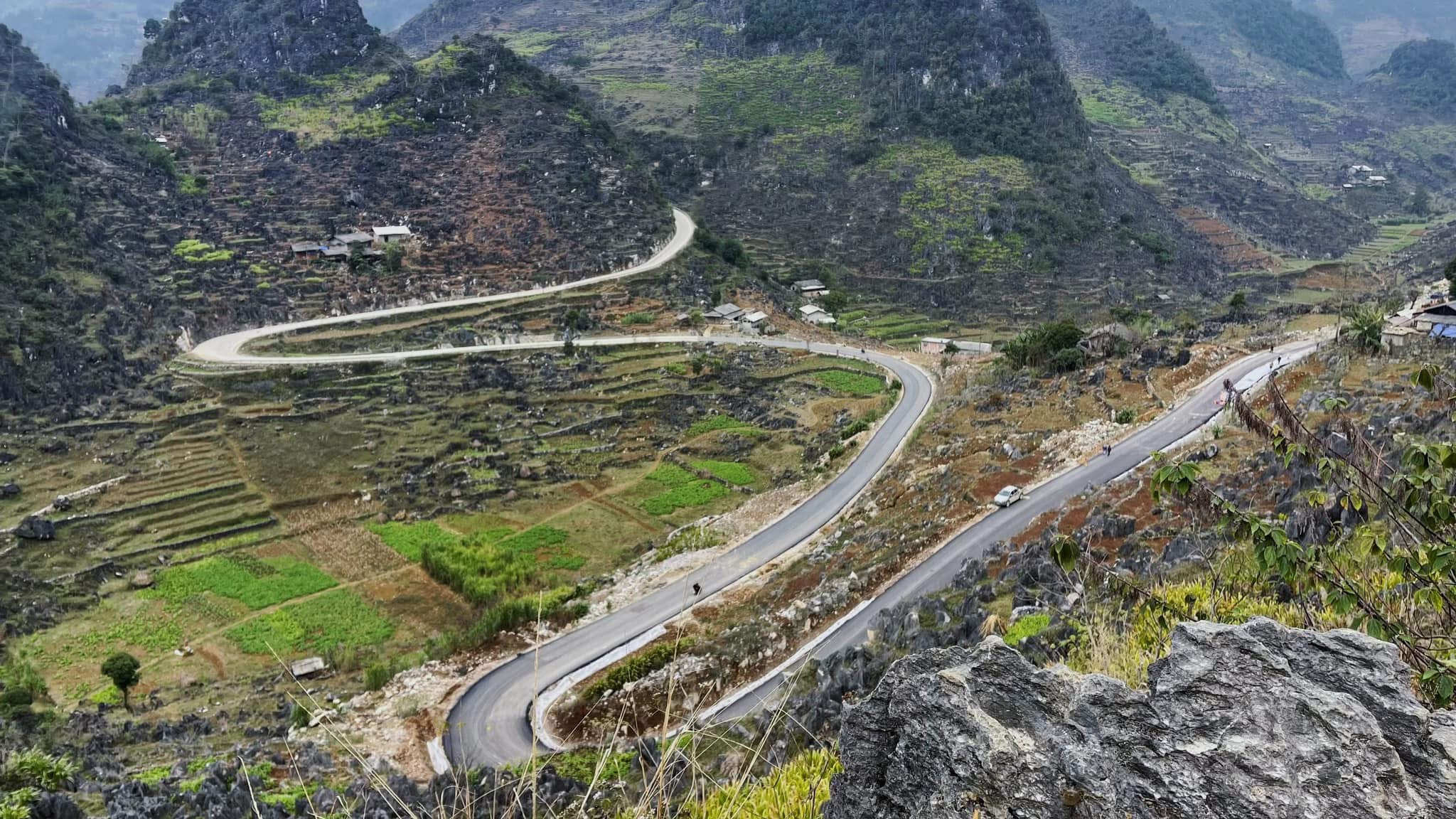
The Ultimate Guide to Driving the Ha Giang Loop by Car from Hanoi
3. Police Checkpoints and Enforcement on the Ha Giang Loop
The enforcement landscape on the Ha Giang Loop has evolved significantly in recent years. What was once a remote region with minimal police presence has transformed into an area with regular checkpoints and systematic enforcement. This shift has caught many foreign travelers by surprise.
Understanding where and how enforcement occurs can help you make informed decisions about your journey. Local authorities have specific patterns and priorities that become predictable once you understand the system.
3.1 How Frequent Are Police Stops?
Police checkpoints on the Ha Giang Loop have increased substantially since 2023, with 2025 seeing the most consistent enforcement to date. The frequency varies by season, location, and sometimes by week based on local directives.
During peak tourist seasons (October-November and March-April), checkpoints become particularly common. They typically appear at strategic points:
- Major town entrances and exits (especially Ha Giang City, Dong Van, and Meo Vac).
- Popular tourist attractions (near Lung Cu Flag Tower, Ma Pi Leng Pass).
- Border area access points (within 25km of the Chinese border).
- Major road junctions where riders must slow naturally.
Weekends see increased enforcement compared to weekdays. Morning hours (8:00-11:00am) and late afternoon (3:00-5:00pm) represent the most active periods for traffic police. During lunchtime and after 6:00pm, checkpoints typically reduce or cease operations.
Travelers report an average of encountering 2-4 checkpoints during a standard 3-4 day loop journey in 2025. However, this number increases significantly during government campaigns or following motorcycle accidents involving tourists.
3.2 What Happens if You Are Stopped?
Being stopped at a Ha Giang Loop checkpoint follows a relatively predictable pattern for foreign tourists. Understanding this process can help reduce anxiety and prepare you for potential interactions with authorities.
When signaled to stop (typically with a whistle and hand gesture), you’re expected to pull over immediately and turn off your engine. The officer will request three primary documents:
- Your driving license and IDP.
- Your passport (or at minimum a photocopy).
- The motorcycle registration papers (usually provided by your rental company).
If your documentation is complete and valid, you’ll typically be allowed to continue without issue. The check rarely takes more than 5 minutes for properly licensed riders.
Without proper licensing, the situation becomes more complicated. Officers generally speak limited English, so communication challenges often arise. Most will explain the violation through translation apps or basic English. You’ll be informed of the fine amount and expected to pay immediately.
Some travelers report being offered “unofficial resolutions” with lower amounts paid directly to officers. However, this practice carries significant ethical and legal risks, potentially encouraging corruption and creating problems for future travelers.
3.3 Tips for Legal Travel (and Common Pitfalls)
Navigating the Ha Giang Loop legally requires preparation and awareness of common misconceptions that lead travelers into problematic situations.
To ensure a legally compliant journey:
- Obtain your IDP before traveling to Vietnam (impossible to get once you’re in-country).
- Verify your home license explicitly covers motorcycle operation.
- Choose reputable rental companies that check documentation properly.
- Carry original documents (not just digital copies) in waterproof protection.
- Research Vietnamese road rules to avoid secondary violations.
- Consider easy rider services if you lack proper licensing.
Common pitfalls to avoid include:
- Believing rental companies that claim “nobody checks licenses here”.
- Assuming car licenses authorize motorcycle operation.
- Thinking police “don’t target tourists” or “only want bribes”.
- Relying on outdated forum advice from pre-2023 (enforcement has changed drastically).
- Assuming your travel insurance covers unlicensed riding (it almost certainly doesn’t).
Remember that Vietnamese traffic police have dramatically improved their understanding of foreign licenses and IDPs in recent years. Tactics that might have worked in the past (showing international student IDs, club memberships, etc.) are no longer effective.
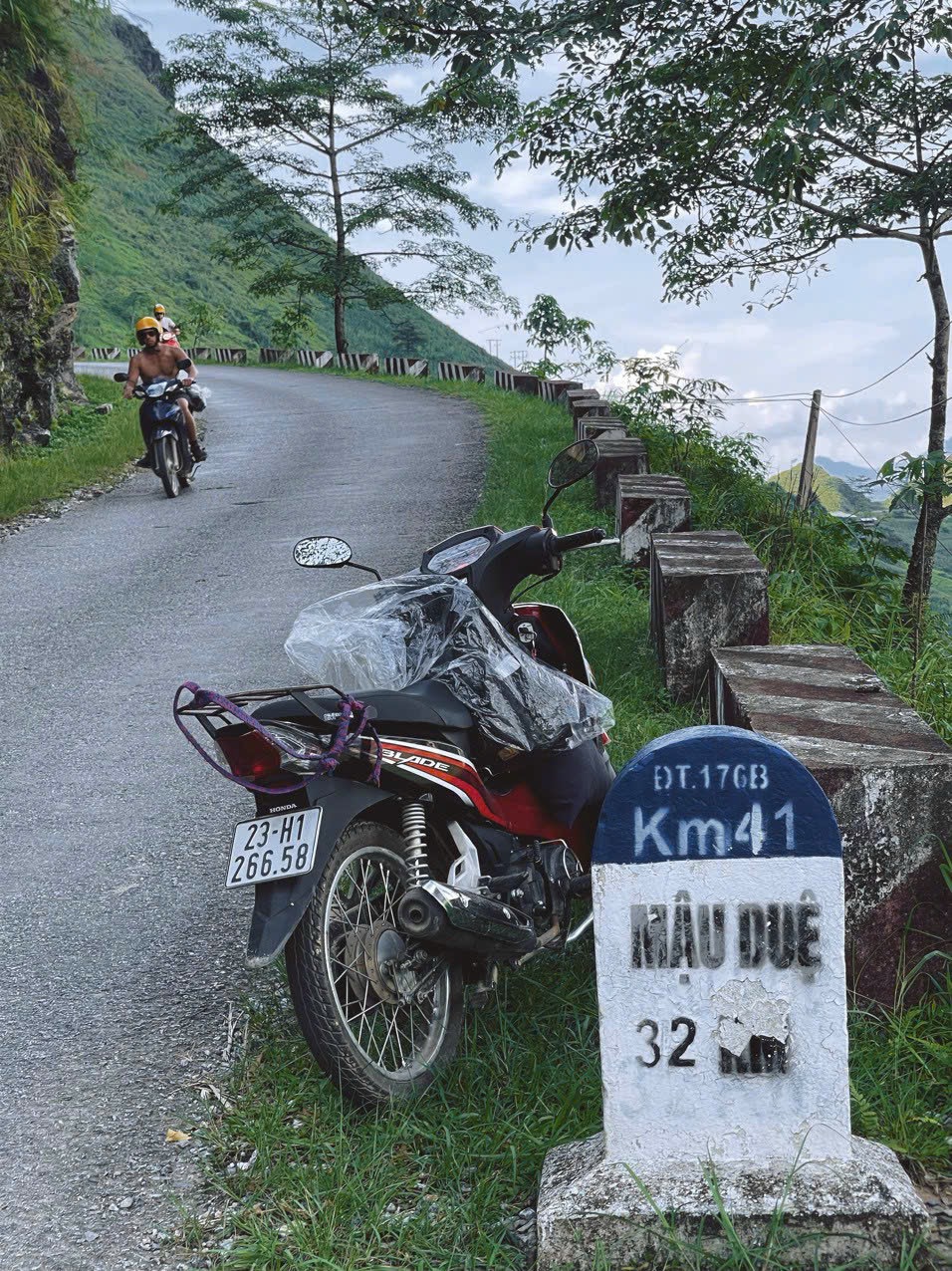
4. Other Traffic Violations and Fines to Know (2025 Updates)
While riding without a proper license represents the most common violation for foreign travelers on the Ha Giang Loop, numerous other infractions can result in fines. Vietnam’s 2024-2025 traffic law updates have increased penalties across various categories.
Understanding these additional regulations helps you avoid compounding problems during your journey. Multiple violations simultaneously can significantly increase your financial liability and heighten the risk of vehicle confiscation.
4.1 Speeding
Ha Giang’s mountain roads tempt many riders with their sweeping curves and dramatic vistas. However, speed limits are strictly enforced, particularly near populated areas and on dangerous sections.
Speed limits vary by road type:
- Urban areas: 40 km/h (25 mph).
- Rural sections: 60 km/h (37 mph).
- Mountain passes: 40 km/h (25 mph).
Speeding fines range from 800,000 to 4,000,000 VND ($30-$160 USD), depending on the severity of the violation. Police increasingly use portable speed detection equipment, particularly on straightaways entering towns and villages.
The most heavily monitored sections include approaches to Dong Van, Meo Vac town entrances, and the straighter portions near Yen Minh. Local riders can often signal upcoming speed traps by flashing their headlights to oncoming traffic.
4.2 Running Red Lights
Though less common along much of the rural loop, traffic signals appear in the larger towns. Running red lights or failing to obey traffic signals carries substantial penalties in 2025.
Violations of traffic signals incur fines between 1,000,000 and 3,000,000 VND ($40-$120 USD). This includes:
- Running red lights.
- Proceeding against an officer’s hand signals.
- Failing to stop at required intersections.
- Ignoring temporary traffic control during road work.
These violations are most commonly enforced in Ha Giang City itself, where multiple traffic signals control the busier intersections. The mountain sections have few formal traffic lights, though temporary signals sometimes appear during road maintenance.
4.3 Drinking and Driving
Vietnam has implemented strict zero-tolerance policies for alcohol and driving. These laws apply equally to the Ha Giang Loop, where enforcement has intensified following several alcohol-related accidents involving tourists.
The legal blood alcohol limit for motorcyclists in Vietnam is effectively zero. Any detectable alcohol results in penalties. Fines range from 2,000,000 to 8,000,000 VND ($80-$315 USD) for motorcycle riders.
Police may conduct random breath tests at checkpoints, particularly in the evenings near popular tourist dining areas in Dong Van and Meo Vac. Testing positive not only results in fines but almost certainly leads to vehicle confiscation and potential temporary detention.
Local rice wine (rượu) is potent and commonly offered to tourists. While sampling local culture is part of the travel experience, save any alcohol consumption for after you’ve finished riding for the day.
4.4 Other Common Offenses
Several additional violations frequently catch foreign riders by surprise. These include:
- Helmet violations: Both driver and passenger must wear properly secured helmets meeting Vietnamese standards. Wearing a helmet improperly (unfastened or perched on top of the head) carries the same 200,000-400,000 VND ($8-$16 USD) fine as not wearing one at all.
- Wrong-way driving: Some narrow sections of the loop tempt riders to take shortcuts. Driving against traffic, even briefly, incurs fines of 1,000,000-2,000,000 VND ($40-$80 USD).
- Carrying excessive passengers: Motorcycles are limited to two people total (driver plus one passenger). Exceeding this limit (common among some tourist groups) results in fines of 400,000-600,000 VND ($16-$24 USD).
- Documentation issues: Beyond license requirements, failing to carry vehicle registration papers or proof of civil liability insurance brings additional penalties of 100,000-200,000 VND ($4-$8 USD).
- Mobile phone usage: Using phones while riding carries fines of 1,000,000-2,000,000 VND ($40-$80 USD). This includes checking maps or taking photos while the vehicle is in motion.
The combination of multiple violations significantly increases the likelihood of substantial fines and vehicle confiscation. Police officers have considerable discretion in determining the total penalty when several infractions occur simultaneously.
5. Insurance, Safety, and Additional Consequences
The consequences of riding without proper licensing on the Ha Giang Loop extend far beyond immediate fines and vehicle confiscation. Less obvious but potentially more serious repercussions affect your travel insurance coverage and personal safety.
These hidden risks represent the most compelling reasons to approach the Ha Giang Loop legally. While fines might be budgeted as an “expected cost” by some travelers, insurance invalidation creates potentially catastrophic financial exposure.
5.1 Insurance Invalidation Explained
Perhaps the most serious consequence of riding without a proper license is the automatic invalidation of your travel insurance. This creates a significant financial risk that many travelers fail to consider.
When you operate a vehicle without proper licensing in Vietnam, most travel insurance policies contain explicit exclusions that void your coverage for:
- Medical expenses resulting from accidents.
- Emergency evacuation costs (which can exceed $10,000 USD in remote Ha Giang).
- Liability for damage to other vehicles or property.
- Compensation for injuries to others involved in accidents.
Insurance companies routinely investigate the circumstances of motorcycle accidents in Vietnam. The first questions typically concern licensing status and rental documentation. Without proper licensing, claims are almost universally denied.
The financial implications become severe in case of accidents. Ha Giang’s remote location means medical facilities are basic at best. Serious injuries typically require:
- Evacuation to Hanoi (5-7 hours by ambulance).
- Potential air evacuation for critical cases ($15,000-$25,000 USD).
- Extended hospitalization.
- Possible medical repatriation to your home country.
Without insurance coverage, these costs fall entirely on the individual. Multiple travelers have faced medical bills exceeding $50,000 USD following accidents on the loop, with no insurance support due to licensing violations.
5.2 Safety Risks of Illegal Riding
Beyond legal and financial considerations, riding without proper licensing introduces significant safety risks. These dangers stem from both direct and indirect factors related to unlicensed operation.
Proper motorcycle licensing exists primarily for safety reasons. Without it, riders often lack:
- Formal training in emergency maneuvers.
- Experience handling motorcycles on challenging terrain.
- Understanding of countersteering and proper cornering techniques.
- Familiarity with defensive riding principles.
The Ha Giang Loop features some of Vietnam’s most challenging roads:
- Extreme elevation changes (up to 20% grades).
- Tight switchbacks requiring technical skill.
- Unpredictable road conditions (landslides, loose gravel, unexpected obstacles).
- Mixed traffic including trucks, buses, and livestock.
- Weather changes that rapidly transform road conditions.
These challenges demand riding skills that unlicensed tourists frequently lack. This contributes to the region’s concerning accident statistics, with multiple serious injuries and fatalities reported annually.
Additionally, riders without proper licensing often demonstrate risk-compensation behaviors:
- Taking alternative routes to avoid checkpoints, often on more dangerous roads.
- Riding at unusual hours (very early morning/late evening) when visibility is poor.
- Traveling at higher speeds between checkpoints to “make up time”.
- Experiencing higher stress levels that impair decision-making.
Local hospitals report a disproportionate number of foreign tourists among their motorcycle accident cases, with unlicensed riders significantly overrepresented. This reality underscores why proper licensing isn’t merely a legal formality but a critical safety issue.
6. FAQs about Fines and Documentation on the Ha Giang Loop
Navigating the legal requirements of the Ha Giang Loop generates many questions from travelers. Here are clear answers to the most common inquiries about licenses, fines, and related concerns for this iconic Vietnamese motorcycle route.
6.1 Can I ride with a U.S./Australian/NZ license?
No, licenses from the United States, Australia, and New Zealand are not valid for motorcycle operation in Vietnam, even with an International Driving Permit. This represents one of the most common misunderstandings among tourists.
These countries issue IDPs under the 1949 Geneva Convention, while Vietnam only recognizes the 1968 Vienna Convention. This fundamental legal incompatibility means riders from these nations cannot legally operate motorcycles in Vietnam using their home license, regardless of what some rental companies might suggest.
The only way for citizens of these countries to legally ride is to obtain a Vietnamese motorcycle license. This requires:
- A temporary resident card (not a tourist visa).
- Translation and verification of your home license.
- Written and practical examinations.
- Processing time of 1-3 months.
For most short-term visitors, this makes legal independent riding impossible. Alternative options include hiring an Easy Rider service or joining organized tours that don’t require you to drive personally.
6.2 What if I pay the fine can I keep riding?
Technically, paying a fine does not grant permission to continue illegal operation. However, the practical reality in Ha Giang presents a more complicated situation.
When you pay a fine for unlicensed riding, you receive a violation receipt. This document does not serve as a temporary license or permission to continue riding. Legally, you should stop operating the vehicle immediately.
In practice, many travelers report continuing their journey after paying fines, often encountering multiple checkpoints during their loop. Each checkpoint represents an independent enforcement opportunity, meaning you could be fined repeatedly for the same violation.
Some travelers report showing their previous fine receipt at subsequent checkpoints, with mixed results:
- Some officers allow travelers to continue after seeing a recently paid fine.
- Others issue a new fine, considering each instance a separate violation.
- Occasionally, repeat violations trigger vehicle confiscation.
This inconsistent enforcement creates significant unpredictability. While some complete the loop after paying 1-2 fines, others report being stopped 4+ times, accumulating substantial costs.
6.3 Do rental companies check my license?
Rental practices vary widely across Ha Giang, creating confusion for travelers. The market includes everything from highly professional operations to informal guesthouses renting personal scooters.
Reputable rental companies typically:
- Request to see your original motorcycle license and IDP.
- Take photos or copies of your documentation.
- Explain local traffic regulations and potential consequences.
- Provide proper registration papers and insurance documentation.
- Offer helmets and safety equipment meeting Vietnamese standards.
However, many businesses rent motorcycles without verifying licensing status. They might:
- Claim “police don’t check foreigners here” (increasingly untrue).
- Suggest that fines are “just part of the experience”.
- Offer to “help negotiate” if you’re stopped.
- Provide minimal or incorrect information about legal requirements.
This lax approach creates a false sense of security. Regardless of what rental companies suggest, you bear full legal responsibility for operating without proper licensing. Choose rental providers that insist on proper documentation, as they typically maintain better quality vehicles and provide more comprehensive support.
6.4 How can I legally ride the Ha Giang Loop?
For travelers determined to experience the Ha Giang Loop legally, several options exist depending on your nationality and circumstances.
If you’re from a 1968 Vienna Convention country (most of Europe, Brazil, Russia, etc.):
- Obtain an IDP under the 1968 Vienna Convention before leaving your home country.
- Ensure your home license explicitly authorizes motorcycle operation.
- Bring original documents and keep them protected from weather.
- Rent from reputable companies that provide proper registration and insurance.
If you’re from a non-Vienna Convention country (US, Australia, Canada, etc.):
- Consider an Easy Rider service – ride as a passenger with a licensed local driver.
- Join small-group tours using cars or minivans for transportation.
- Focus on specific sections with guided day trips rather than the full loop.
- For longer stays, pursue a Vietnamese license conversion (complex but possible).
Several tour operators now specialize in legal Ha Giang experiences for those without proper licensing. These services typically cost more than self-guided rental options but eliminate legal risks while still providing the region’s spectacular views and cultural experiences.
Phieu Travel offers specialized Ha Giang Loop packages designed for international travelers navigating these complex requirements. Their services include legal transport options, licensing verification, and alternative experiences that capture the region’s beauty without legal complications.
Navigating the spectacular Ha Giang Loop requires more than just motorcycle skills it demands legal preparation and awareness. With fines ranging from 2-8 million VND and stricter enforcement in 2025, understanding Vietnam’s licensing requirements has never been more important for foreign travelers.
The reality is clear: most Western tourists cannot legally ride motorcycles in Vietnam without obtaining a Vietnamese license. This creates a challenging situation for travelers seeking to experience this breathtaking landscape independently.
Yet the Ha Giang Loop remains accessible through alternative means whether joining Easy Rider services, booking guided tours, or focusing on specific sections with legal transportation. These options allow you to enjoy the region’s dramatic beauty without legal complications or insurance risks.
For those determined to ride independently, remember that proper documentation isn’t merely about avoiding fines it’s about ensuring your safety and financial protection through valid insurance coverage. The consequences of accidents without insurance in this remote region can be catastrophic.
When planning your journey to Vietnam’s northern frontier, Phieu Travel can help navigate these complex requirements with customized experiences that prioritize both legality and authentic adventure. Visit Phieutravel.com for Ha Giang Loop packages that address these challenges while delivering the region’s unforgettable landscapes and cultural encounters.
Whether you’re seeking legal alternatives or comprehensive information about Ha Giang Loop fines, proper preparation ensures your northern Vietnam adventure creates memories for all the right reasons.
Read more:
- Best Things to Do in Duong Thuong, Ha Giang Vietnam
- Quan Ba Heaven Gate Gateway to Ha Giang’s Mystical Highlands
- Bac Sum Pass: Gateway to Ha Giang Loop Adventure

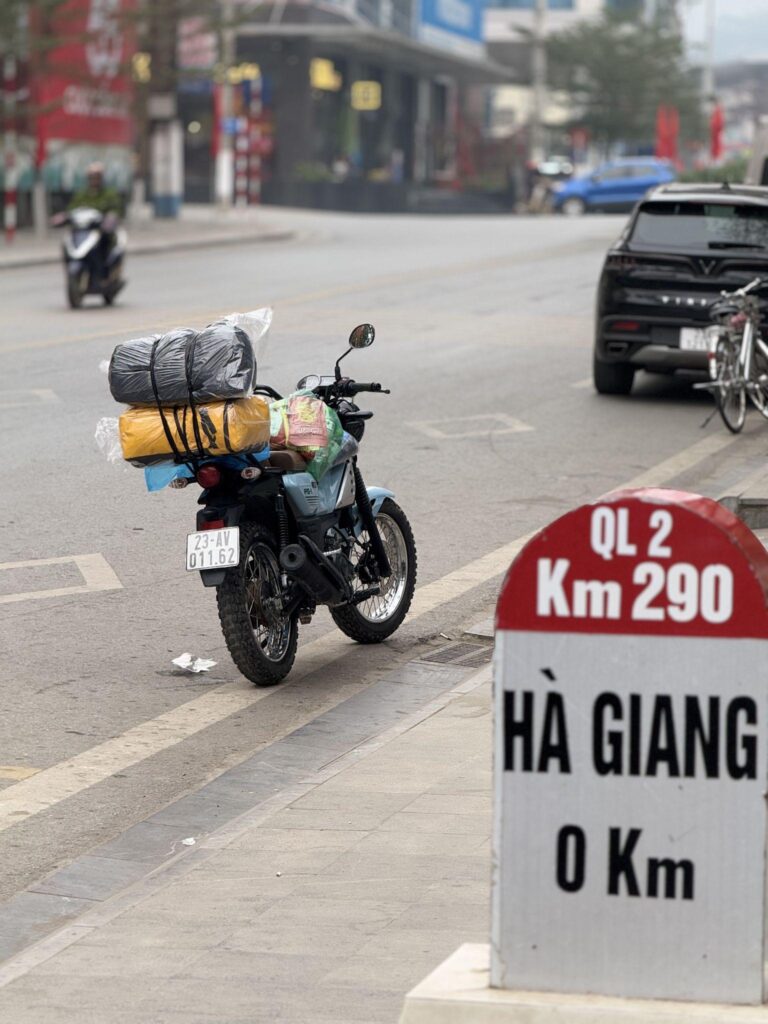
You Might Also Like
Ha Giang Weather in September: Complete Guide for Travelers
Exploring the magnificent Ha Giang Loop in September offers travelers a perfect balance of favorable[...]
Quan Ba Twin Mountains: Ha Giang’s Iconic Fairy Hills and Complete Travel Guide
The mystical Quan Ba Twin Mountains rise from the emerald valleys of Ha Giang like[...]
Vuong family mansion: the architectural marvel and cultural legacy of Ha Giang
Deep in Vietnam’s northern highlands, where mist-shrouded mountains meet terraced rice fields, stands a testament[...]
Ha Giang Loop Safety Tips: How to Ride Securely in Vietnam’s Northern Mountains
The Ha Giang Loop, with its winding mountain roads and breathtaking landscapes, offers one of[...]
The Ultimate Guide to the M-Shaped Curve on Ha Giang Loop
Vietnam’s remote northern province of Ha Giang hides a natural wonder that has captivated adventurous[...]
Most Beautiful Places to Visit in Vietnam: Essential Destinations and Insider Tips
Vietnam captivates travelers with its stunning landscapes, rich cultural heritage, and warm hospitality. From mist-shrouded[...]
Beyond the Beaten Path: Discovering Ha Giang Province in Northeast Vietnam
Ha Giang Province in Northeast Vietnam stands as one of the country’s last frontiers for[...]
Rainy season in Ha Giang: what to expect, when to go, and travel tips
Vietnam’s northern frontier reveals a different face during the rainy season, transforming Ha Giang’s limestone[...]